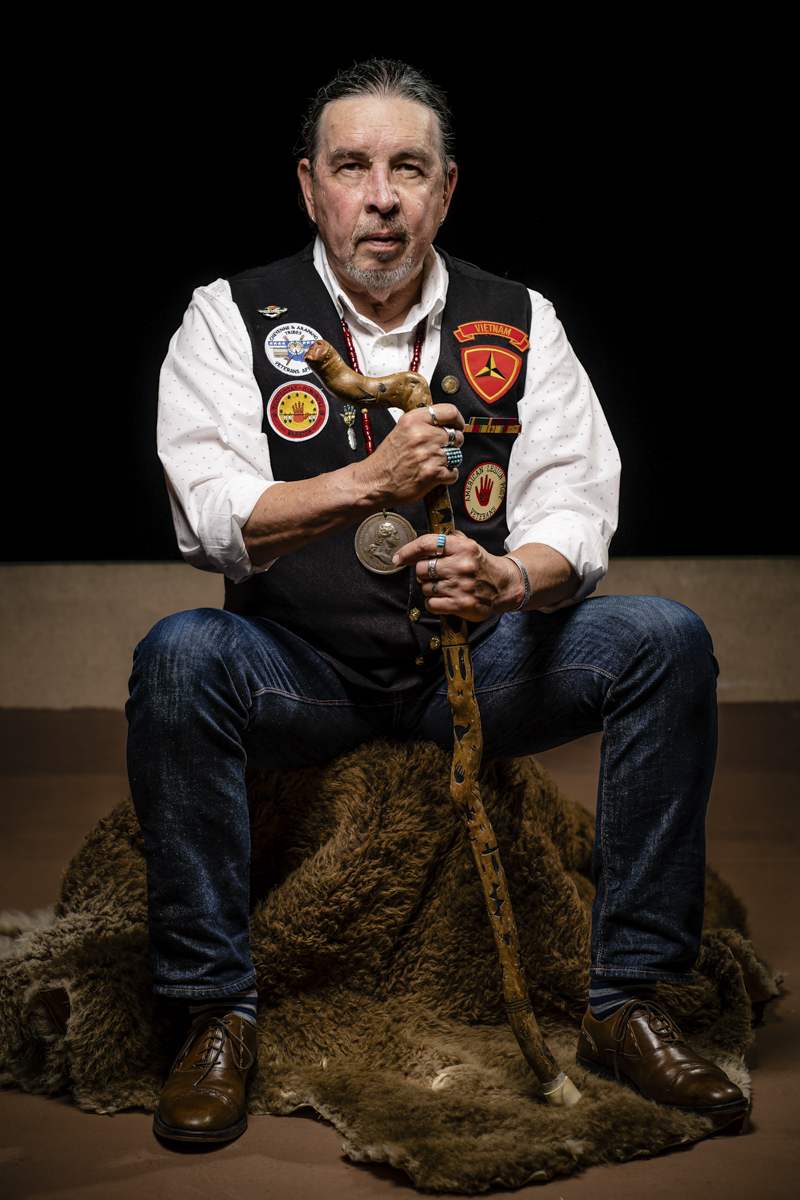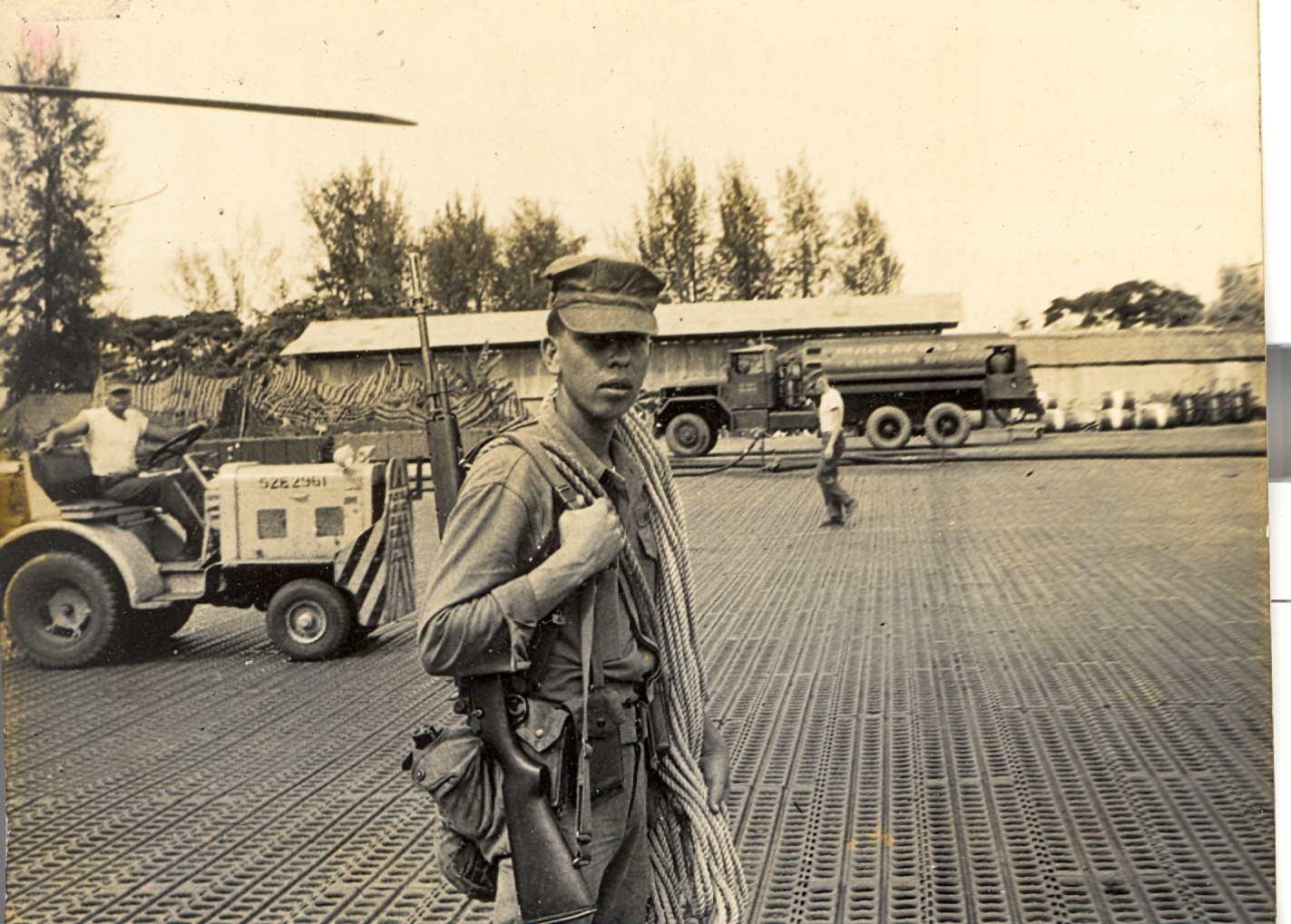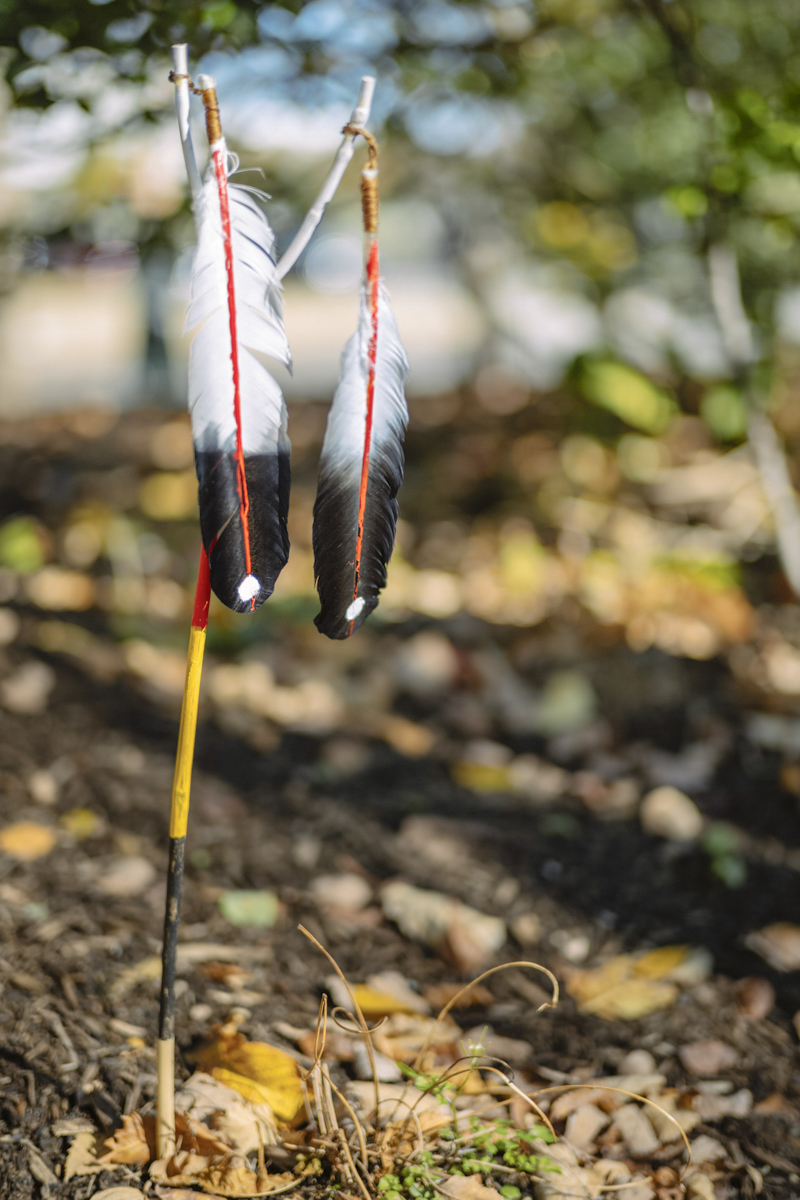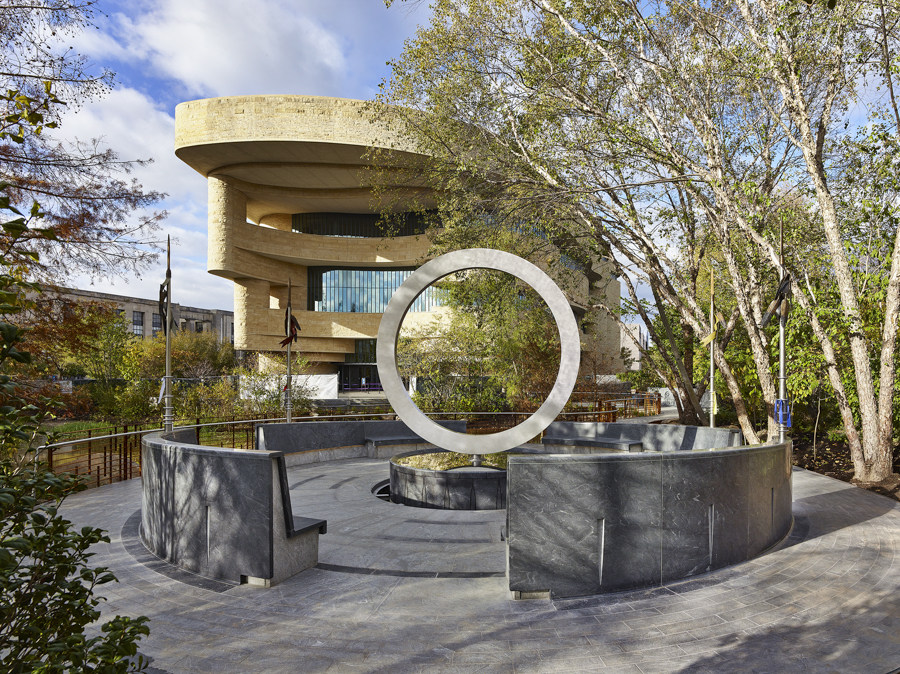Just east of the National Museum of the American Indian (NMAI) in the nation’s capital, surrounded by a few stalwart trees on well-manicured grounds, stands a new memorial. The Warrior’s Circle of Honor, or the National Native American Veterans Memorial, represents those hailing from tribal nations who have served in all military branches.
Although the monument technically debuted in November 2020 with a virtual celebration, its unveiling welcomed only a few visitors. The monument’s designer, Harvey Pratt, was one of them. But most would not have noticed him. The Vietnam veteran appeared at a slight distance, humble and silent, in observance of such a memorable moment. Nothing was lost at this virtual event. Pratt’s design pays tribute to the heroic contributions of some 574 federally recognized Native American tribes to the defense of America, at home or on foreign soil.
“I think there are many heroes in the history of America, both Native and non-Native,” reflected Pratt, an American Indian of the Southern Cheyenne, and Arapaho tribe. “We can choose heroes for the occasion and reason, as there are many famous and not-so-famous.”

Pratt’s design creates a sacred space for all Americans but would ultimately resonate with and for all 574 tribal nations. His architectural piece, chosen by the Smithsonian Institute out of 413 applications, pays tribute to the American Indian, Alaska Native, and Native Hawaiian veterans. The man behind the monument, though humble, captured what the Smithsonian Institution had hoped for.
According to the project curator for this new shrine, Rebecca Head Trautmann, Pratt is a kind, thoughtful, talented artist, whose own experience as a veteran and American Indian provided a rich perspective of Native culture to this once-in-a-lifetime project. Twenty-eight Native American veterans, whose service ranged from Korea to the present day, were selected to work through design goals. Their input would help Americans understand the compelling story of Native veterans’ long history of service to our country.
“Our conversations with Native veterans, families, and community members were essential to getting a sense of what they wanted to see in the memorial, the values it must embody, and what the experience of visiting the memorial should be,” stated Trautmann. Pratt believes people need hope and inspiration, conveyed through the preservation of the culture, especially in authentic storytelling through art. And his interior desire is to educate non-Natives in ways that create open dialogue to better understand the patriotic contributions of Natives to America.
“We (Natives) are all related—the same, but different,” he said. “We connect through traditions and ceremonies. I hope it inspires people to ask questions. It provides a place for Natives to honor past, present, and future people of our heritage in the act of service to the United States of America.”
According to the designer, Natives are a people of circles. As such, the Warrior’s Circle of Honor presents sacred space as timeless and unified. Circles represent the cycles of life, from the unborn to the passing of this life, similar to the passing of seasons. The drum, as if beating to the spirit of all indigenous people, gathers all to remember and connect to a greater life experience in the sacred acts of prayer, cleansing, and reflection, as the water flows gently over the drum.
Connecting the universal elements of water, fire, earth, and air, the artist’s design beckons visitors from the outer circular walkway, the Path of Life, into a secondary, inner circular sanctuary that represents the harmonizing of all elements with humankind. Here, a large, vertical, stainless-steel circle, shaped like a hollow ring, appears to hover over a stone drum and a basin of water. Pratt explains that this circle presents an opportunity to reach Heaven, where the Creator lives and lovingly sends gifts back down to us. With sacred colors, the memorial embodies red to represent where the Creator lives, white for purification and the start of the new day, yellow for Mother Earth, and black for ancestors who passed on hallowed teachings.
In Native culture, paying attention helps people draw upon significant life events. Pratt’s entrance into the world in 1941 was one such event. His was a veiled birth, where the amniotic sac clings to the infant’s face. His mother’s aunts, who were attending the birth at home, saw the veiling and exclaimed, “He wants to be a chief!” They aptly named him “Vehunchkiss”—the one who wants to be chief.
In his youth, the passing of seasons for Pratt took place in El Reno, Oklahoma, where he was taught in a public-school agency. The artist attributes his artistic success to those heroes who encouraged his natural gifts, promoting his work throughout his learning years. He believes today’s education crushes creativity, as education is put in a box with little exploration for the imagination. “They did so much for me, and they allowed me to be creative,” he said. “Mrs. Jones, especially, in first grade, complimented me on my art drawings.”
And yet other heroes impacted his life. His mother’s little brother was his hero, too. His uncle shared stories of his experiences in the Marine Corps, and inspired Pratt to join the Marines. One of his high school instructors, an ex-Marine, even asked about his concerns regarding Vietnam. Pratt replied with two: not leaving his body in the forest, hoping his bones could come home for a proper Native burial; and regrets for having never known a deep love for a woman.

Like many Native Americans before him, Pratt served well. His mission with the Charlie Company, in the 3rd Reconnaissance Battalion, was to protect the Da Nang Air Base, recovering disabled aircraft, equipment, and personnel.
“It was a great experience, and I feel very proud to be a Marine,” declared Pratt, who served from 1962 to 1965. “Thinking back, I was probably the first Native American in South Vietnam with a Marine combat platoon in 1963. We were not supposed to have ground combat Marines there in 1963.”
Although he admitted to not having a special story about his time in Vietnam, Pratt served with honor and respect. “I didn’t want to let down those who I served with. I felt good when I heard, ‘Let the Indian do it! They are good at it.’ And it made me want to be a good Marine.”
Following his service, Pratt used his artistic abilities as a forensics artist in a distinguished career in law enforcement that spanned 50 years. Even his tribe has recognized his outstanding contributions and awarded him with the nation’s highest honor as a traditional Cheyenne Peace Chief.
“American people recognize their veterans. Native people are recognized at the raising of the flag and at all pow wows, with the flag song sung first. Then the veterans’ song and the honor song follow. Some tribal members will not even step on the shadow of a veteran,” he added.
Even though the history of Natives and their service is not well known, the memorial will be one way to accommodate and honor America’s Native warriors. Funds from taxpayers were not used in its construction; in fact, every cent of the $17 million was raised through donations. The Warrior’s Circle of Honor will officially be unveiled with a public procession scheduled for November 11, 2022.
When visitors make a point to visit Pratt’s epic winning monument, they will be encouraged to meditate and remember. Many have and will leave offerings, like bits of tobacco or prayer cloths, tying them to nearby trees or to the four lances designed with eagle feathers and battle ribbons. Pratt also left a ceremonial feather stick at the unofficial unveiling, silently striking the memorial four times before leaving it in the ground nearby.

Honorably, the NMAI retrieved Pratt’s offering to save for the archives. Trautmann pointed out how the museum handles offerings. “The NMAI does not keep or acquire any offerings left at the memorial. Offerings left are disposed of respectfully in an appropriate manner, including Native American cultural practices for organic offerings.”
With Pratt’s vision realized, this new memorial will become a place of healing for all human beings to experience. “Natives have all the same wants and needs,” he said. Achieving these goals is accomplished “through hard work and following our spiritual beliefs and the recognition of all our gifts: plants, animals, the Earth, and the Creator who gave us our beliefs—though different, but the same.”
Krista Thomas is an independent writer, public speaker, business consultant, and academic educational coach for TAN Academy. Contact her at [email protected]




